October 7, 2021
The Golden Age of Piracy: The Real Pirates of The Caribbean
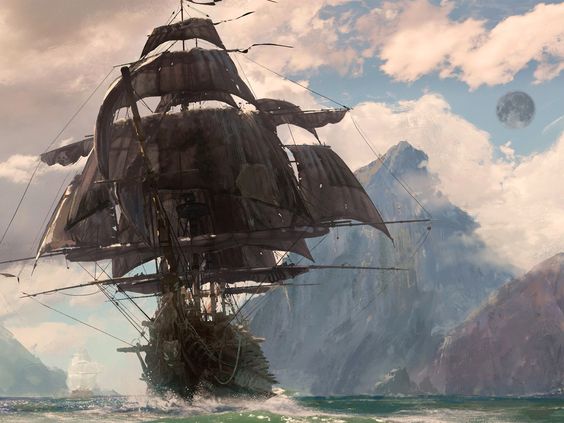

The Caribbean Islands, 1715: Blood on the water. The black flag flies proudly as pirates plunder and pillage the high seas seemingly without consequence, bringing world empires to their knees. Adventurers and swashbucklers from all over the world flock to the islands eager to pursue their fortunes. Among these maritime raiders came three of the most notorious pirates to ever sail the seven seas: the brutish Charles Vane, the wild and clever “Calico” Jack Rackham, and the terror of the Caribbean himself, Edward Thatch, known endearingly among his fellow plunderers as Blackbeard. What these men desire most is fortune and glory…but their unquenchable thirst for gold and silver would eventually prove to be their downfall.
To understand the origins of our troublesome trio of pirates, our story will begin following the events of the Spanish War of the Succession. England and Spain had just emerged from a particularly disastrous conflict, in which colonial land was conquered, surrendered, conquered, and surrendered again in an endless cycle of destruction.1 During the war, a Spanish fleet seized the British Caribbean island of Nassau, hoping to teach the British a firm lesson in violence. In the year 1703, in a series of catastrophic events, the Spaniards plundered the island of its riches, slaughtered its inhabitants, and razed it to the ground. The once tropical paradise had been reduced to a mere pile of ash, left utterly abandoned of its life and settlers. Seeing that preserving Nassau as a colonial province was a lost cause, England withdrew all presence from New Providence Island and left it to rot as a backwater, shoddy outpost of disease and filth.2
Years passed, and Nassau remained empty. With the signing of the Peace of Utrecht between Britain and Spain in 1713, English privateers found themselves unemployed; many decided to abandon their careers and resort to piracy.3 Following the Spanish war, rumors of an unoccupied island, free of British control, started to spread all across the Caribbean. Around 1713, Captain Benjamin Hornigold, a veteran of the Spanish War himself, settled on the island with a ragtag band of former privateers. With him was a young Edward Thatch, whom Hornigold would take as an apprentice and introduce to a life of piracy.4 Drunkards, tradesmen, merchants, and pirates alike began to flock to Nassau; its utopian appeal attracted other famed seafaring marauders, such as the wealthy planter-turned-pirate Stede Bonnet, the female pirates Anne Bonny and Mary Reade, and Sam Bellamy, among others. Among the new wave of arrivals between 1716 and 1717 was an ambitious English captain, Charles Vane, and his cunning first mate, Jack Rackham.5 Many other pirates continued to discover a safe haven on Nassau; however, none stood out more than the terrifying trio themselves. Combined with the mentorship of Benjamin Hornigold, the brutality of Vane and Blackbeard, and the cleverness of Rackham, the pirates of Nassau came together and declared war: not only on England, but on all civilization.
As the number of pirates on Nassau increased, it was time to get busy. At the suggestion of Captain Hornigold and Blackbeard, the pirates agreed to fortify Nassau’s old British defenses to prevent against incursions by fellow pirates and the English Crown alike. The leading council of pirates, consisting of Hornigold, Blackbeard, Rackham, and Vane, established a makeshift, yet somewhat efficient, Republic. Though there seems to be a lack of evidence to suggest that they had a clear set of laws, their word was respected all throughout New Providence Island.6
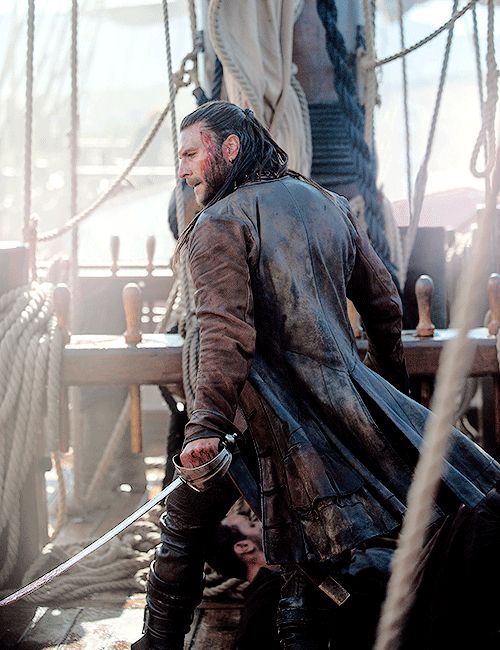
Blackbeard, Vane, and Rackham did most of the dirty work when it came to plundering. Together, they began to seize prizes on the high seas, capturing merchant ships and sinking British vessels left and right. With hulls full of plunder and booty, Blackbeard and Vane decided to take it a step further, embarking beyond Nassau’s waters—and they began to terrorize the Atlantic coast. With his trusty brig The Ranger, and Jack Rackham as his second, Charles Vane went on a rampage, plundering the waters spanning from the Caribbean to as far north as the New York coast. He was known for his cruelty towards his captives, punishing and torturing them in sadistic methods. One of Vane’s notable prizes was a Bermudan merchant vessel, known as the Diamond, which was traversing the waters surrounding the Bahamas at the time of its capture. Vane’s crew overcame the ship swiftly, and with exceptional brutality. In a testimony given to the governor of Bermuda, one survivor alleged that Vane had tortured him with a cutlass, then hung him. Furthermore, the captain of another Bermudan vessel, the William and Martha, attested that Vane had humiliated the merchant crew with severe beatings and torture methods, including burning them with lit matches. Vane was fond of a particular form of torture and execution known as keelhauling, in which the victim was tied up with a rope, thrown overboard, and dragged from one side of the ship to the other. The victim would be forced to endure an unimaginable amount of pain, often to the point of bleeding out, in which the barnacles attached to the ship’s hull would inflict punishing lacerations to their bare skin.7
Contrary to the attitudes of his captain, Rackham was the quietest of the trio, preferring the art of plotting and planning from the shadows rather than cruelty and brute force. As the Ranger’s first mate and quartermaster, he was charged with managing the crew and keeping order aboard at all times. He followed Vane on every heist, lending a calming ear to his captain when he could. Rackham and Vane had a love-hate relationship; although the two often disagreed, together, they were an unstoppable force of pirate might. Rackham had the brains, and Vane had the brawn. Besides being incredibly cunning, Rackham was also a womanizer; between the years 1718 and 1719, Rackham recruited a female pirate, Anne Bonny, to the crew. The couple became lovers, and for the rest of Rackham’s pirating career, they would never leave each other’s side. Much to the annoyance of Charles Vane, Jack’s charisma, cleverness, and romantic nature found favor among the crew, who were growing increasingly weary of the captain’s cruel demeanor. Rackham is credited with pioneering the design of the Jolly Roger, the black flag emblazoned with a skull and crossed swords that signaled impending death upon all who saw it.8
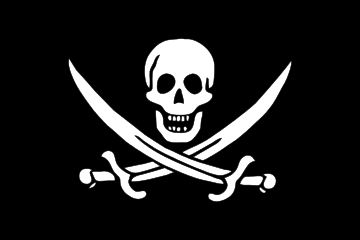
In 1717, Blackbeard’s campaign extended its terrifying reach from the waters of Chesapeake Bay to Philadelphia and the upper eastern coast, as he traveled back and forth between northern and Caribbean waters. Blackbeard’s plundering would not have been possible without his prized frigate, the Queen Anne’s Revenge. Formerly a French slave ship known as La Concorde, she boasted a massive broadside of French and English cannons, and was known for her impressive sailing speed. Just on his Atlantic campaign alone, Blackbeard captured fifteen ships within a span of a few weeks, which was a great accomplishment for even the most skilled pirates. Blackbeard’s notoriety allowed him to amass a small pirate fleet, which included Stede Bonnet and his own brig, the Revenge.9 Vessel after vessel fell victim to Blackbeard and his cohorts, all the while the elusive captain evaded capture by the Royal Navy. Blackbeard’s greatest and most daring feat, however, was the infamous blockade of Charleston, in which he and his fleet laid siege to the Charleston harbor for six days, sinking or capturing any merchant vessels that dared to pass by. Blackbeard held his unfortunate prey of captured crewmen for ransom, vowing not to end his blockade until Charleston agreed to pay him in medicines to treat syphilis. Eyewitness testimony from his captives attested that Blackbeard oftentimes did not plunder for resources, but simply just to delight in destruction—in which he leveled entire coastal settlements and sank or burned merchant ships without cause. Accounts within A General History Of The Pirates allege that Blackbeard was a fearsome fighter, armed with a bandolier of flintlock pistols; apparently, Blackbeard would also tie lit fuses to the bottom of his captain’s hat to make him appear more devilish in battle.10
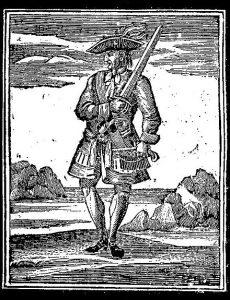
Despite the temporary success of the pirates, a new arrival had thrown Nassau into despair. While Blackbeard was taking a temporary vacation from piracy off the North Carolina coast, Vane returned to Nassau to flaunt his prizes. Little did he know, however, that Nassau was about to be changed forever. Observing that the piracy problem in the Caribbean and the Atlantic coast was out of control, King George I appointed Woodes Rogers as governor of New Providence Island. The King gave the pirates an ultimatum: to take a royal pardon and live their lives as penniless, but free men, or to die as pirates either by the sword or by the noose. By the year 1718, Rogers had arrived to Nassau with an English fleet, promises of civilization, and a full list of pardons. Captain Hornigold, the once proud mentor of pirates far and wide, took the pardon and agreed to hunt down his former associates.11 Jack Rackham, in an effort to secure his own life and that of his swashbuckling lover, Anne Bonny, agreed to the pardon. Vane and Blackbeard, however, were not amused by the governor’s antics. Vane openly refused the pardon, and in an incredible display of pirate heroism, launched a fireship into the governor’s blockade, and ordered the Ranger to fire its cannons on Rogers’ flagship.12 In the confusion, Vane successfully escaped Nassau; and Blackbeard continued his pirate rampage across the Atlantic.
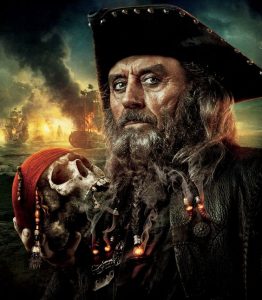
The die had been cast; the pirates had played their cards, and it was up to Governor Rogers to make the next move. Rogers was determined to end the scourge of piracy once and for all, and he enlisted the help of eager pirate hunters from all across the British Empire. Blackbeard and Vane had made no friends across the high seas during their years of raiding and plundering; indeed, there was no shortage of those who wanted to see their destructive campaigns come to a swift end. At some point in 1718, Vane was deposed as captain of the Ranger. His cruel methods were not appreciated by his crew, who viewed him as a greedy and tyrannical leader. The crew conducted a mutiny and voted in Rackham as captain. As a result, Vane was marooned on a desert island off the coast of Honduras, where he eventually found refuge on a passing merchant vessel. Unfortunately, the ship’s captain recognized Vane, and turned him over to British authorities. In 1720, he was tried in Port Royal, Jamaica, and found guilty of piracy. Vane was executed the following year.13
Rackham eventually abandoned the governor’s pardon and returned to piracy. He proved to be an efficient leader, but his captaincy was short lived. In 1720, Rackham was captured by pirate hunters and imprisoned in Port Royal. He pleaded his innocence on all four counts of piracy, but his testimony proved futile. Rackham ultimately suffered the same fate as Charles Vane—he too was executed, and his body was hung to rot in a gibbet outside of Port Royal’s harbor.14 Blackbeard fell in battle during a naval skirmish with British troops off the mainland of Ocracoke. In a surprise attack, he was overcome by the combined forces of British Lieutenants Alexander Spotswood and Robert Maynard. Although his crew managed to put up a great fight and killed a significant amount of British soldiers, the fearsome captain met his end aboard the enemy’s ship. Blackbeard’s body was dumped into the sea, and his head was allegedly granted as a trophy to Spotswood.15
With the death of the last great Caribbean pirates, the Golden Age of Piracy had come to a close. Small pockets of pirates still remained throughout the Bahamas, but none ever rose to the infamy of Nassau’s formidable trio of marauders. In the end, civilization proved to be stronger than the pirates; under the careful eye of Governor Rogers, the once wild and free island was tamed, finally welcomed once again with open arms into the embrace of the British Empire. The pirate’s life slowly drifted away, into the annals of history; it was now nothing more than a fantasy, a long lost dream of aspiring adventurers and daredevils. The Golden Age of Piracy may have come to an end, but it remained forever burnt into the minds of those who experienced it.
- James A Ogilvy, “War of the Spanish Succession, The Canadian Encyclopedia,” The Canadian Encyclopedia, accessed October 1, 2021, https://www.thecanadianencyclopedia.ca/en/article/war-of-the-spanish-succession. ↵
- Aaron Higgins, “The Republic of Pirates,” Nassau in the Atlantic World (blog), accessed September 27, 2021, http://aaronhiggins.blogs.wm.edu/the-republic-of-pirates/. ↵
- Toby Arguello, “Nassau’s Pirates: Revealing the Sordid History of the Bahamian Port City,” Explore the Archive (website), July 15, 2020, https://explorethearchive.com/nassau-pirates-history. ↵
- The Legends of History, Benjamin Hornigold: The Man Who Trained Blackbeard (Pirate History Explained), 2018, https://www.youtube.com/watch?v=GxJep2rzo3Y. ↵
- Mark Cartwright, “Charles Vane,” World History Encyclopedia, accessed September 27, 2021, https://www.worldhistory.org/Charles_Vane/. ↵
- Aaron Higgins, “The Republic of Pirates,” Nassau in the Atlantic World (blog), accessed September 27, 2021, http://aaronhiggins.blogs.wm.edu/the-republic-of-pirates/. ↵
- Mark Cartwright, “Charles Vane,” World History Encyclopedia, accessed September 27, 2021, https://www.worldhistory.org/Charles_Vane/. ↵
- Mark Cartwright, “Calico Jack,” World History Encyclopedia, accessed September 27, 2021, https://www.worldhistory.org/Calico_Jack/. ↵
- Toby Arguello, “Nassau’s Pirates: Revealing the Sordid History of the Bahamian Port City,” Explore the Archive (website), July 15, 2020, https://explorethearchive.com/nassau-pirates-history. ↵
- Colin Woodard, “The Last Days of Blackbeard,” The Smithsonian (website), accessed September 27, 2021, https://www.smithsonianmag.com/history/last-days-blackbeard-180949440/. ↵
- Aaron Higgins, “The Republic of Pirates,” Nassau in the Atlantic World (blog), accessed September 27, 2021, http://aaronhiggins.blogs.wm.edu/the-republic-of-pirates/. ↵
- Mark Cartwright, “Charles Vane,” World History Encyclopedia, accessed September 27, 2021, https://www.worldhistory.org/Charles_Vane/. ↵
- Colin Woodard, “The Last Days of Blackbeard,” The Smithsonian Magazine (website), accessed September 27, 2021, https://www.smithsonianmag.com/history/last-days-blackbeard-180949440/. ↵
- Mark Cartwright, “Calico Jack,” World History Encyclopedia, accessed September 27, 2021, https://www.worldhistory.org/Calico_Jack/. ↵
- Colin Woodard, “The Last Days of Blackbeard,” The Smithsonian Magazine (website), accessed September 27, 2021, https://www.smithsonianmag.com/history/last-days-blackbeard-180949440/. ↵
Tags from the story
Bahamas
Blackbeard
Caribbean
Charles Vane
Edward Thatch
England
Jack Rackham

Elliot Avigael
I am double majoring in History and Theology at St. Mary’s University. I am absolutely fascinated by and enjoy studying the lives of history’s most cunning military leaders, including Attila the Hun, Genghis Khan, Vlad Tepes, and many others. My passions include writing music, electric guitar, studying Talmud, and reading history.
Author Portfolio PageRecent Comments
Aaron Sandoval
I found this article to be very well written, I have never researched or looked into the age of piracy so I came into this article with some very basic knowledge, but this article was very informative and filled in a lot of the gaps I had. There were a lot of aspects that I had not taken into account when it came to the piracy age, I had never considered the amount of political involvement in this age, as well as the culture that had been created.
18/10/2021
9:36 am
Seth Roen
Strangely, modern-day interpretations of pirates depict them as noble rebels and adventures who did whatever they wanted, such as those in the Pirates of the Caribbean movies. But from you you describe them, they were anything but. Most were terrible people who did awful things to others. But it is an exciting thought of a Pirate Republic and their equality society.
31/10/2021
9:36 am
Jourdan Carrera
This article provides an excellent historical insight into the realm of piracy which was a topic I did not know hardly anything about until reading this. I knew, of course, about Black Beard, however I did not know that these men had an entire pirate island in which they called home, nor did I know that these men also had a form of a pirate government. The most interesting part of this article for me was that of how the golden age of piracy came to an end, after having such a long lived streak of glory, it came to an end with a small whimper with all of the pirates being killed in battle or sentenced to death.
04/11/2021
9:36 am
Phylisha Liscano
This article was interesting. I had very little knowledge of piracy before reading but I enjoyed getting the chance to read more about it. Taking a look I can tell lots of research was put into your article and you provided lots of information. Overall great article and an excellent topic. Great work and congratulations on being nominated, good luck!
20/11/2021
9:36 am
Jaedean Leija
I know Elliot Avigael and talking to him before class and hearing the way he talked about what he has wrote you can tell he is very passionate about it and that is why reading his article flows so smoothly and makes you want to know more. I’m going to be honest I would’ve never read anything about piracy because it does not invest me but knowing Elliot and hearing him talk about his topic well you want to learn and actually reading his accomplishment. the article was wonderful and it very much did interest me about this topic and the past. I now want to read more and hear more about piracy because we don’t really acknowledge it in school and this is a fun thing to read about.
21/11/2021
9:36 am
Aztlan Alvarado
This article is well written and does a great job of making you want to read more and not lose focus. The story of these pirates is not one I had heard before, but it’s amazing to see just how much history is in the world to learn about. I had never heard of the golden age of piracy but after reading about Blackbeard and the others, its fascinating to see just how many different styles of life have been present over time.
24/11/2021
9:36 am
Vivian Urrutia
I find it amazing how we sometimes believe everything we see in movies and stick with that information being the only thing we will ever know about that topic. That is what happened to me after seeing the “Pirates of the Caribbean” movie and now I know there is so much more to it. I had no idea the Golden Age of Piracy existed. It is shocking to see how pirates really tried to dominate but it ended up being an almost exciting idea. I liked the detail you used in this article and the amount of information that was given. Good job!
28/11/2021
9:36 am
Gisselle Baltazar-Salinas
I was in love with all the Privates of the Caribbean movies growing up, so I was quickly drawn to your article. I really enjoyed the flow of the article starting off describing the names and beginning of piracy. It was interesting to see some new names I never heard of like Vane and Hornigold. After reading this I am curious to know more about what we became of one of the only privates to take the pardon. Might even have inspired a topic for my article.
14/01/2022
9:36 am
Aurora Torres
WOW! I never new that the story was regarding The Pirates of the Caribbean. At first reading it it reminded me of the conquest for land when everyone was sailing to look for land and America was discovered and a place to a unknown. Turns out that everyone is always after something either in a bad or good way. No matter what there will always be battles amongst people that want to be in control. I enjoyed reading that there was even woman pirates that is so interesting because I did not know that. reading the end of the story no matter what the bad always catches up to you and everyone must pay for what they did. they all die in the end with their punishments.
24/01/2022
9:36 am
Aidan Farrell
This was a very well done and fun to read article. I did not know much about the actual pirates of the time, besides what i have seen in movies such as Disney’s Pirates of the Caribbean, but this article that you wrote was astounding. Learning the historical accuracy was very interesting and rather fun at the same time. You really went into great detail which I appreciate, and your image choice is amazing as well. Very good job Elliot, well done.
17/10/2021
9:36 am